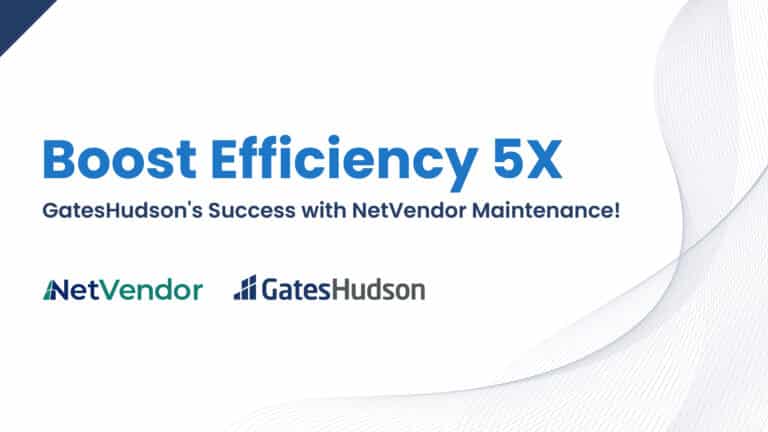In multifamily apartment operations, moving maintenance and other field service jobs away from paper-based, manual business processes and over to mobile, app-based, digital workflows is a major initiative for 2018/19.
Enabling massive productivity boosts for field service staff, significant improvement in asset repair records, and enhancing resident engagement through automated service notifications, field mobility can be a major win for multifamily operators.
Before that can happen, there is one nagging dilemma that senior management has to address:
“Do we provide a smartphone for field service staff or expect them to bring-your-own-device (BYOD)?”
You might be asking yourself (thinking the answer is obvious), “everyone has a smartphone, right?”
They pretty much do – the smartphone market is at or near saturation, as evidence of steady declines in global smartphone sales, and in a 2017 study, Pew Research reports that near 80% of US adults own a smartphone. Based on this, most would expect the answer to be that workers just bring their own device.
However, as any operator who has tackled mobility can tell you, the answer is not that simple. Here are the pros, cons, and lessons learned when it comes to tackling field mobility in multifamily:
Bring-Your-Own-Device (BYOD) PROS
A 2016 research report from Syntonic indicated that 60% of companies have BYOD-friendly policies, and 87% of companies rely on their employees using personal devices to access business apps. These numbers have only grown since.
BYOD is the most popular choice, and there are some very good reasons for this:
BYOD-PRO #1. Device Preference
People are emotional about their devices, especially if they just bought a new one. Often, they like the smartphone they have better than a “cheap” model the company might provide.
BYOD-PRO #2. Devices can be expensive for businesses to provide
Even used iPhone 6S & 7’s are selling for $300-500 on a used phone marketplace. Androids tend to be more affordable, but are still very expensive.
BYOD-PRO #3. Managing a company-provided device program can be challenging
Dealing with add/moves/changes/break/fix, along with managing your cellular provider contracts, can easily consume a full-time employee.
BYOD-PRO #4. Employees don’t want to carry two devices
Unless a team member is big on a defined physical separation of work life and personal life, carrying two phones can be annoying. This pro goes hand-in-hand with point #1 – employees who have a strong device preference will also feel strongly about this point.
Bring-Your-Own-Device (BYOD) CONS
There are some cons to BYOD that can quickly derail a mobility initiative in the field.
Here are some common challenges that happen consistently enough that they may have an impact on your decision to move forward with a BYOD strategy:
BYOD-CON #1. Technician runs out of cellular data mid-month, goes back to paper
Most mobile maintenance apps are at least partially reliant on a persistent data connections to upload real-time data to cloud repositories or for real-time chat communication. When a technician runs out of data mid-way through the month (even if the company is reimbursing them for data), they will quickly fall back to old ways of working and your mobility initiative and all the value it brings will grind to a halt.
BYOD-CON #2. Mobile Apps not compatible with older/cheaper phones technicians are using
Despite best intentions of app developers, supporting every smartphone ever made is impossible. Most app developers (ServusConnect included) support the most common/popular devices and operating systems in an effort to get wide coverage in the market.
With Android devices, developers face the challenge of unbelievably fragmented device and operating-system variant environment. As an example, Android Marshmallow (v6.x) on a S6 Samsung phone on Verizon could, and most times is, wildly different under the covers than Android Marshmallow on a pre-paid LG Tracfone purchased at Walmart.
iOS is considerably more stable across versions, although things got messy between versions 10 & 11. The more troublesome fact is that there are still a ton of iPhone 5, 5C, 5S & 6 in the market, and they may not have the horsepower to run modern apps consistently well.
There is nothing worse than an app that crashes all of the time – and it may not be the app’s fault!
BYOD-CON #3. Not enough storage on device to load business apps
This goes back to less-expensive phones – they tend to have less (way less!) onboard storage. It is common with BYOD clients to run into issues with technicians being unable to even load an app, let alone deal with the data-overhead the app brings.
BYOD-CON #4. Security & privacy concerns with Resident Data
This is the biggest concern multifamily operators have with BYOD. Access to resident data, even minimal (name, phone, address), on devices not under corporate control is likely too risky for some.
*As a note, operators who do take on BYOD will update acceptable use policies concerning company & resident data that employees must sign off on. They may also deploy security certificates and other mobile device management technologies to enable remote wipe of devices in the event the employee is terminated or the device is lost.
Company-Issued Devices (CID)
CID is still popular with companies who support field service employees. All forms of field service professionals, from your local cable/phone company, to your own apartment maintenance team members, rely on fast, reliable access to client/resident data so they can quickly and effectively do their jobs.
The cons of CID are in the pros of BYOD, so we won’t spend time reviewing those here. The pros however are worth reviewing.
Here are a few reasons why you would want to deploy company provided devices for your mobile maintenance initiative:
CID-PRO #1: Speed-to-Value
Not only can all of the “cons” associated with BYOD be taken off the table, you can roll out mobility to your operations staff just as fast as you can get devices in technician’s hands. In most cases, corporate wireless providers can deploy hundreds of devices to dozens of locations in an extremely short number of days – likely faster than you are prepared to receive them!
CID-PRO #2: Data Protection & Security
It is much easier to deploy device level security and centralized mobile device management (MDM) on corporate-owned devices (especially if they are all the same model and operating system) than it is with BYOD. Being a company-owned device, revoking access at a device level, monitoring usage, location, pushing new usage policies, and even remote-wipe in the event of a lost/stolen device, are all easily accomplished tasks.
CID-PRO #3: Smartphone is part of the uniform
Providing devices takes all of the excuses off the table of why a maintenance team member doesn’t show up with their device on Monday morning. The occasional lost/broken phone will happen, but most operators treat this with the same policy and procedure as they do lost/broken corporate-provided tools. Having and maintaining the CID is part of your technician’s job responsibilities and not having it is the same as not showing up to work with their appropriate apparel or tools.
CID-PRO #4: Consistent & reliable access to cellular data
No more “I ran out of data” excuses, unless of course you turned off their data because of inappropriate or excessive use. That usually only happens once :-).
CID-PRO #5: Lock-down devices for work purposes only
The same mobile device management (MDM) used to protect your resident’s data in the event of employee termination or lost device can be configured to turn company-provided smartphone devices into a locked-down, for-work-only device.
This is helpful if you’ve ever experienced employees that consume your entire shared-data-pool because they were streaming movies on Netflix, watching YouTube videos all day, or had mobile hot-spot turned on to power a personal device for the same purposes.
Hybrid Device Program
If you are still stuck on what to do, a hybrid approach may be for you. This program is also very popular with employees because it provides them the opportunity to opt-in to BYOD or CID depending on their personal preference.
The other nice thing about a hybrid approach is that is may end up being cost-neutral. With BYOD, you will likely provide your employees with some sort of stipend for using their own device and data-for-work purposes. This amount ranges from $30-50/month.
To illustrate this, we’ll break down your field technicians into three common, generic personas. Spending years working with various technician communities, we are able to describe who they are and what they like/don’t like. Most importantly, we will recommend which approach your technician is most likely to opt-in for:
Persona #1: Technician Dave
Let’s just say Dave is concerned about being tracked electronically by his employer. It’s not that Dave does anything nefarious, he just feels it encroaches on his civil liberties. Though he is ok with work calling him on his personal device while at home, along with the occasional text message, the thought of putting a company-provided app on his personal device makes him extremely uncomfortable.
OPT-IN Decision: CID
Persona #2: Technician Susan
Susan has been on the job for years and is one of those employees that just goes with the flow. She is open to trying new ways of working, especially if it removes some of the mundane tasks in her daily job responsibilities. If Susan likes spending time on her smartphone during personal time, then BYOD may be right for Susan. However, if Susan doesn’t really care then CID may be equally as attractive.
OPT-IN Decision: Toss-up
Persona #3: Technician Ed
Ed is technically astute and always has his device. He’s the person who your employees in the leasing office call when they have a computer issue or device question. Ed uses text messaging heavily, has a lot of apps and likely has a device that is current technology. He likely has a bluetooth headset. Ed is also most likely to be multi-lingual and uses apps like Google Translate to do his job.
OPT-IN Decision: BYOD
Conclusion
As noted at the beginning, there is a lot for companies to consider on this topic. For companies deploying mobile and web apps that are available on the Google and Apple app stores, or accessible through a mobile browser, BYOD is a great approach and where the market is ultimately headed. That being said, apartment maintenance technicians represent a very unique user community, and providing them the option of using a company-issued device could be a very attractive employment incentive.
Note from the author: Over our tenure, the ServusConnect team has interacted with many multifamily operators of varying sized and markets, along with thousands of maintenance technicians. If you have specific questions on this topic and what is right for you, we’re happy to share our observations – schedule a call today.







